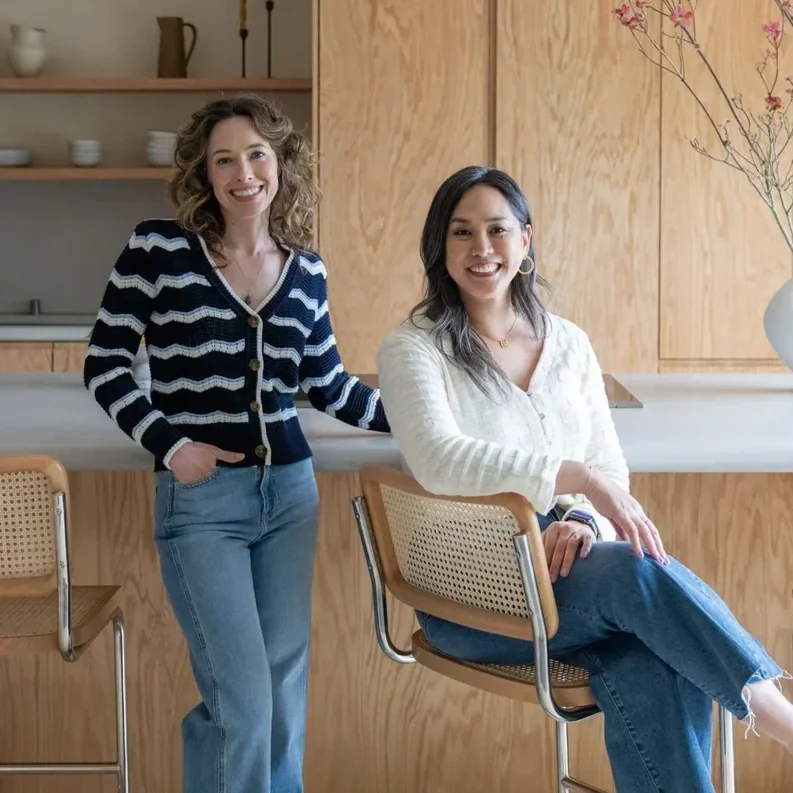What to Know Before Starting a Home Renovation
Every home project is a journey—one that goes beyond selecting finishes and furniture. Whether this is your first renovation or it’s been some time since your last, knowing what to expect makes all the difference. With clarity and thoughtful preparation, you can approach the process with confidence and peace of mind.
At Studio VAE, we believe that thoughtful preparation can transform what feels like an overwhelming project into a collaborative and enjoyable process.
1. Your Mindset Matters
Design projects are deeply personal, and they can also feel like a whirlwind at times. We've supported countless clients through the process and understand that preparing mentally is just as important as preparing logistically.
We're here to normalize the messy middle. Every project has to look worse before it looks better. When you're living through construction dust and decisions, we'll be your steady presence, reminding you of the vision we're working toward.
2. Expect Clear and Consistent Communication
Effective communication is essential to ensuring a smooth experience throughout every phase of your project. During the design phase, we’ll stay in close touch with you—checking in before and after meetings, and whenever we need additional information. You’ll always be in the loop and know exactly what’s happening next.
As we move into the construction phase, our role shifts to that of your liaison and advocate with contractors. We’ll ensure that the vision we’ve worked so hard to create stays intact while keeping you informed about approvals, changes, and progress. We respond promptly—within 2 business days—and manage the tough conversations so you don’t have to.
3. Prioritize Decision Making
The design phase requires numerous decisions, but we'll never overwhelm you with a "decision dump." Instead, we prioritize the most important choices early: your overall aesthetic direction, space planning, investment allocation, custom elements like built-ins and specialty pieces, and lighting strategy for ambient, task, and accent lighting.
When providing feedback, be specific about what you like or dislike and why. Mark up presentations with all feedback at once, and trust our expertise—often the element you're most unsure of becomes your favorite.
4. Smart Investments for Long-Term Value
Not every element needs to be the highest quality. We'll guide you on where to invest for long-term value and where you can save without sacrificing beauty or function.
We recommend investing in quality upholstery and mattresses for daily comfort and durability, statement lighting that acts as the jewelry of your rooms, and area rugs and flooring that withstand high wear while making a significant impact. Plumbing fixtures and cabinets are also worth the investment for their functionality and longevity.
You can save on accent furniture and guest room pieces that see less daily use, trendy items that you'll want to update over time, and smaller details like cabinet hardware and recessed lighting. Beautiful artwork and accessories can be found at every price point, allowing you to create a personal and meaningful space without the highest price tags.
5. Understand Your Timeline
Your project will likely take longer than you initially expect—and that’s completely normal. In fact, most projects end up taking twice as long as clients anticipate because meaningful design can’t be rushed. If you'd like to dive deeper into what timelines typically look like, you can find that here.
Several factors contribute to extended timelines: design development and documentation require dedicated time, procurement of custom pieces can take 8-24 weeks, permitting processes add weeks or months, and good contractors are in high demand with their own schedules. Weather delays, material backorders, and unexpected surprises are inevitable, not exceptional.
Key Takeaways When Preparing for a Home Renovation
Mindset matters — every renovation has a “messy middle,” but trusting the process and your design team keeps you focused on the end goal.
Clear communication is key — we act as your advocate with contractors, keeping you informed and your vision intact.
Prioritize decisions early — making thoughtful, timely choices on layout, investment, and custom elements helps keep your project moving.
Invest where it counts — quality upholstery, lighting, flooring, plumbing fixtures, and cabinetry provide long-term value; save on lower-use or trend-based items.
Expect extended timelines — factors like custom orders, permits, contractor schedules, and weather can add weeks or months, but the result is worth the wait.
Your Partnership With Us
The difference between a stressful renovation and a smooth one isn't the absence of surprises—it's having experienced partners who navigate them with you. We establish clear communication channels from day one and maintain them throughout, ensuring issues are addressed collaboratively before they escalate.
When you’re ready to begin your own home project, we’d love to work with you to bring your vision to life and support you every step of the way. Reach out to us here, and let’s begin our collaborative partnership.
— Veronica & Aggie
Meet the Designers
Studio VAE is a full-service interior design studio serving the San Francisco Bay Area, led by Principal Designers Veronica Jurist and Aggie Revane.
With over 40 years of combined experience in high-end hospitality, residential design and interior architecture, Veronica and Aggie create spaces rooted in sustainability, wellness and meaningful connection.



